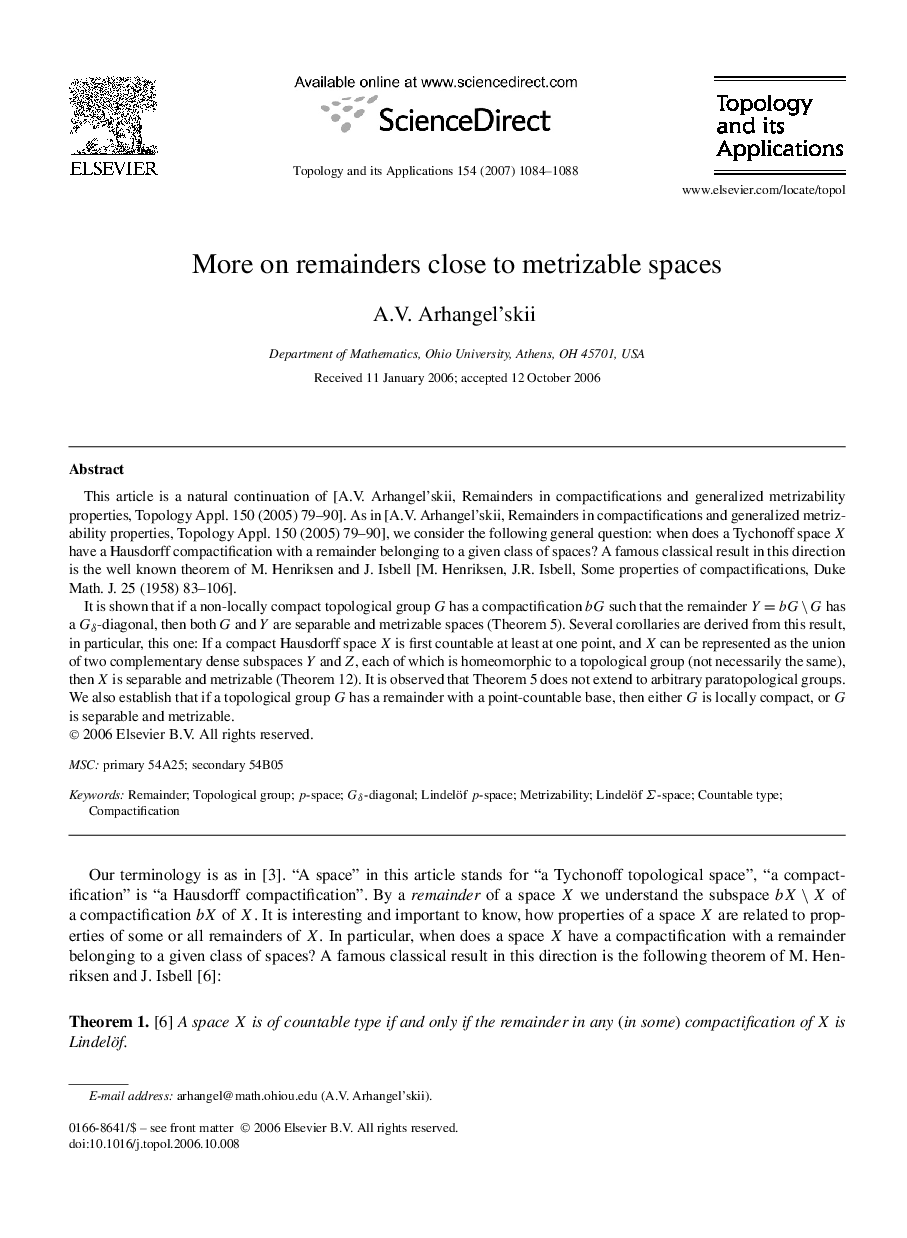| Article ID | Journal | Published Year | Pages | File Type |
|---|---|---|---|---|
| 4661286 | Topology and its Applications | 2007 | 5 Pages |
This article is a natural continuation of [A.V. Arhangel'skii, Remainders in compactifications and generalized metrizability properties, Topology Appl. 150 (2005) 79–90]. As in [A.V. Arhangel'skii, Remainders in compactifications and generalized metrizability properties, Topology Appl. 150 (2005) 79–90], we consider the following general question: when does a Tychonoff space X have a Hausdorff compactification with a remainder belonging to a given class of spaces? A famous classical result in this direction is the well known theorem of M. Henriksen and J. Isbell [M. Henriksen, J.R. Isbell, Some properties of compactifications, Duke Math. J. 25 (1958) 83–106].It is shown that if a non-locally compact topological group G has a compactification bG such that the remainder Y=bG∖G has a Gδ-diagonal, then both G and Y are separable and metrizable spaces (Theorem 5). Several corollaries are derived from this result, in particular, this one: If a compact Hausdorff space X is first countable at least at one point, and X can be represented as the union of two complementary dense subspaces Y and Z, each of which is homeomorphic to a topological group (not necessarily the same), then X is separable and metrizable (Theorem 12). It is observed that Theorem 5 does not extend to arbitrary paratopological groups. We also establish that if a topological group G has a remainder with a point-countable base, then either G is locally compact, or G is separable and metrizable.
